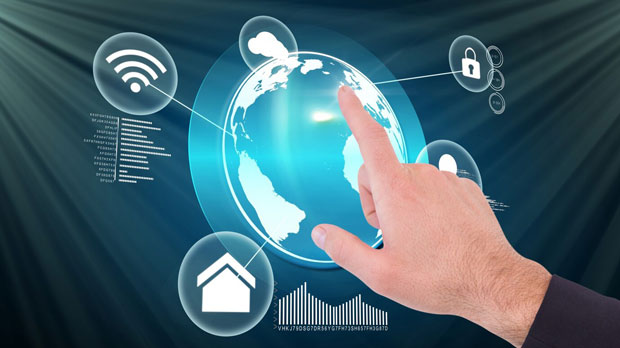When it comes to detecting proxies, two common methods stand out: using proxy detection tools and performing manual detection. While both methods aim to identify and block proxy traffic, they differ significantly in terms of efficiency and accuracy. Proxy detection tools automate the process, providing quick and scalable results, but may sometimes fall short in catching more sophisticated proxies. On the other hand, manual detection, often requiring human oversight and intervention, can be more accurate but is time-consuming and less scalable. This article will explore both approaches in-depth, comparing their strengths, weaknesses, and providing insights for choosing the best method based on specific needs. 1. Introduction: Understanding the Need for Proxy DetectionIn today’s digital world, businesses and organizations are increasingly faced with the challenge of identifying proxy traffic. Proxies can mask a user’s true identity, making it easier to bypass security systems, create fake accounts, or scrape data from websites. This makes effective proxy detection crucial for ensuring security, preventing fraud, and maintaining data integrity.Detecting proxy traffic can be approached in two main ways: using proxy detection tools or manually inspecting traffic. Each of these methods has its own advantages and disadvantages, which should be considered when deciding which method to implement.2. Proxy Detection Tools: Efficiency and ScalabilityProxy detection tools have gained popularity due to their ability to quickly process large volumes of data. These tools utilize algorithms and databases to automatically detect IP addresses associated with proxy servers, VPNs, and other anonymizing technologies. Here are the key aspects of using proxy detection tools:2.1. Speed and Efficiency One of the major benefits of proxy detection tools is speed. These tools can analyze a large number of IP addresses and identify proxies in a matter of seconds. In environments where high traffic volumes need to be monitored, this speed is crucial for maintaining efficiency without compromising on performance.2.2. Automation and Scalability Proxy detection tools are automated, which means they can run 24/7 without requiring human input. This makes them ideal for businesses that deal with massive amounts of web traffic or require round-the-clock monitoring. The ability to scale up as needed is another key advantage, as these tools can handle an increasing number of requests without the need to hire additional personnel.2.3. Accuracy and False Positives While proxy detection tools are fast and efficient, their accuracy can sometimes be questioned. Many tools rely on IP blacklists and heuristics to identify proxies, which may not always capture new or sophisticated proxy methods. Additionally, proxy detection tools can sometimes generate false positives, flagging legitimate users as proxy traffic, which can lead to user dissatisfaction and potential revenue loss.3. Manual Detection: Accuracy and Detailed AnalysisManual proxy detection, in contrast, involves human oversight and analysis. This method is typically employed by security experts who manually review traffic patterns, IP addresses, and other indicators to determine whether a user is utilizing a proxy. Here’s a closer look at manual detection:3.1. High Accuracy Manual detection offers a high degree of accuracy because human analysts can use their judgment to assess the legitimacy of traffic. They are able to spot subtle patterns and identify proxies that automated tools may miss. For example, analysts can manually inspect IP address behavior, identify patterns of fraudulent activity, or detect suspicious network anomalies that automated tools might overlook.3.2. Labor-Intensive and Time-Consuming However, manual detection comes with significant drawbacks. It is time-consuming and labor-intensive, requiring a dedicated team to monitor and review traffic continuously. In addition, it may take longer to respond to emerging threats since the detection process is not as immediate as with automated tools.3.3. Limited Scalability Due to the reliance on human expertise, manual detection does not scale as easily as automated tools. As the volume of web traffic increases, the resources needed to manually monitor this traffic also increase, making it less feasible for large organizations or high-traffic websites.4. Efficiency vs Accuracy: The Trade-OffWhen comparing proxy detection tools and manual detection, it is clear that there is a trade-off between efficiency and accuracy. Proxy detection tools are generally more efficient in terms of processing large volumes of traffic, but their accuracy may be compromised, especially when dealing with advanced proxies. In contrast, manual detection offers more accuracy due to human involvement, but at the cost of speed and scalability.4.1. Efficiency of Tools For businesses with a high volume of traffic, automated tools provide the necessary speed and efficiency. They can process millions of IP addresses quickly and are capable of handling large-scale operations with minimal manual intervention. This makes them ideal for environments where speed is critical.4.2. Accuracy of Manual Detection Manual detection, while slower, can catch more subtle and complex proxies that tools may miss. For high-risk environments or where the accuracy of detection is paramount, manual detection can be a better choice, though it requires substantial human resources.5. Hybrid Approach: Combining Tools and Manual OversightGiven the advantages and limitations of both methods, many organizations choose to combine proxy detection tools with manual oversight to optimize both efficiency and accuracy. This hybrid approach allows businesses to benefit from the speed and scalability of tools while ensuring that more sophisticated threats are addressed through manual review.5.1. Workflow Integration In a hybrid model, automated tools can be used to perform an initial scan of traffic, quickly identifying obvious proxy usage. The flagged traffic can then be passed to human analysts for further inspection. This allows organizations to leverage the strengths of both methods and ensures that the most critical traffic is thoroughly reviewed.5.2. Reducing False Positives By combining the two approaches, businesses can also reduce the risk of false positives. Automated tools can handle the bulk of the work, while manual detection ensures that legitimate users are not wrongly blocked.6. Choosing the Right Approach for Your BusinessThe decision between proxy detection tools, manual detection, or a hybrid approach depends on several factors:6.1. Volume of Traffic If your business handles a high volume of web traffic, proxy detection tools are likely the better option due to their efficiency and scalability. They can handle large-scale operations without requiring a significant investment in human resources.6.2. Risk Tolerance and Accuracy Needs If the stakes are high and you require extremely accurate proxy detection, manual detection may be necessary, especially for high-value or sensitive data. This is particularly important for industries like finance or healthcare, where the cost of a false positive could be significant.6.3. Resource Availability Finally, the resources available to your organization—both in terms of budget and human expertise—will also influence your choice. If you have a dedicated security team and the capacity to conduct in-depth traffic analysis, manual detection may be worth the investment. Otherwise, proxy detection tools can provide a more cost-effective solution.In conclusion, both proxy detection tools and manual detection have their place in modern security strategies. Tools offer speed and scalability, making them ideal for businesses with large amounts of web traffic. However, manual detection provides a higher degree of accuracy, particularly in identifying sophisticated proxy techniques. For many businesses, a hybrid approach combining both methods is the best way to ensure a balance of efficiency and accuracy. Choosing the right method will depend on your organization’s needs, the volume of traffic, and the level of risk you are willing to tolerate.
Nov 07, 2025



































































